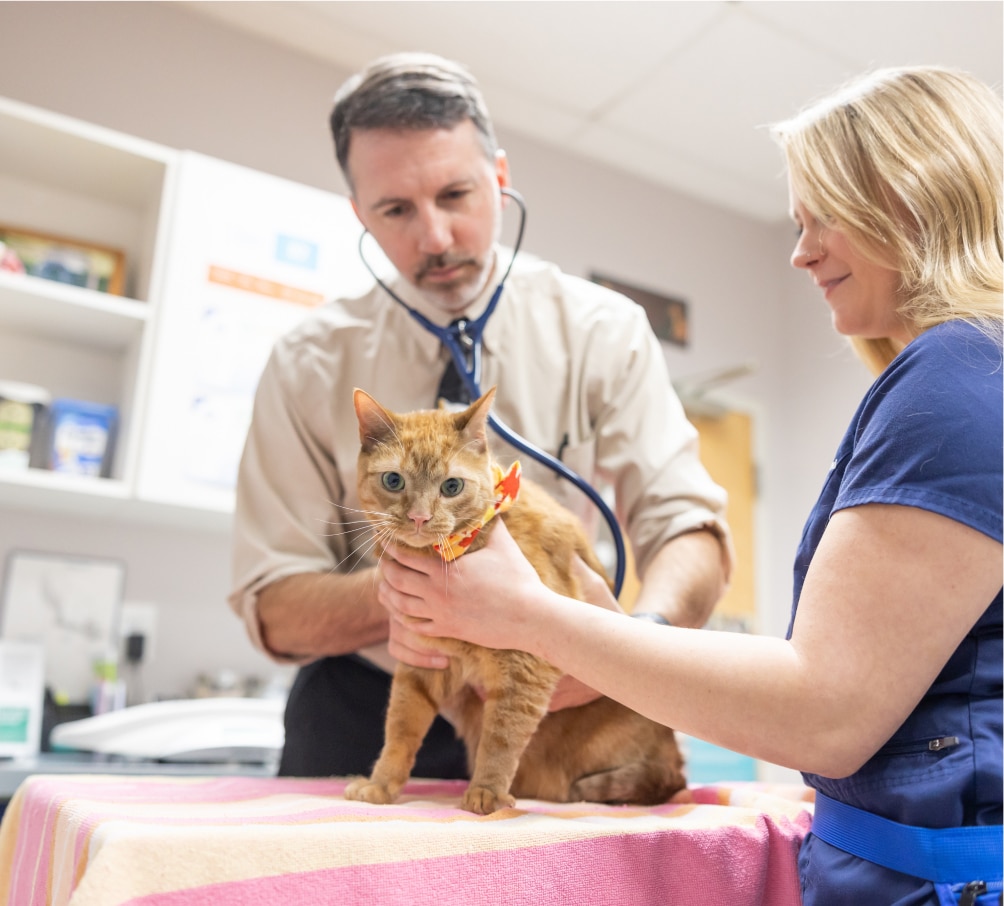Whether your adult cat has just had kittens or you have adopted or rescued a new furry friend, you are likely eager to litter-train. No one likes to find animal waste throughout their home!
Fortunately, kittens are fairly easy to litter train. They instinctively want to cover their waste, they just need a space to do so.
Here are some tips for successful litter-training:
Choosing the Right Litter Box & Placement
Litter boxes should start shallow for small kittens and without a cover so it is easy to access. You can find a shallow plastic bin to use; or, if you prefer to purchase a more long-term option, you can get your desired litter box and build a ramp for the kitten to be able to access it.
Place your litter box in an area of the room that offers a level of privacy. Corners are a good place for first litter boxes. It allows your kitten some privacy while still allowing them to keep watch while they eliminate.
Start with multiple boxes (one per room) with a new kitten, or keep the kitten contained in a play yard or one room with one small box.
Use Kitten-Safe Litter
Much like babies, kittens explore the world around them with their mouths. It is very important to use a litter that will not be harmful if ingested.
Avoid fragrances, as the smell can be too strong and actually repel your kitten. Check ingredient labels to make sure there are no chemicals that would be toxic if ingested.
You should also steer clear of clumping cat litters. These are activated by moisture, and would clump in the digestive system, causing a severe impaction.
Litters high in dust are harmful to a kitten’s lungs. Opt for pellet-based litters to begin with. Clumping litters can be introduced around 2-3 months of age, when your cat is accustomed to litter box use.
Introduce the Litter Box at the Right Time
Kittens younger than 3 weeks old will not be ready for the litter box. They rely on stimulation to eliminate. This is usually performed by the mother, but if you have rescued an orphan kitten, you can do it with a tissue.
If you bring home a kitten that is older than 3 weeks, the litter box is the first thing they should be introduced to. Set them in it and let them sniff around.
Set your kitten in the box immediately after meals and naps. Also if you see your kitten sniffing around or crouching in a particular spot, they could be looking for a place to go. Set them in the box to let them try.
Cats naturally want to cover their waste. When you put your cat in the litterbox, demonstrate digging or move their paws to scrape the litter. Once they realize that they can dig/cover, it may encourage them to eliminate
Praise Proper Use
Praise your kitten whenever they successfully use the litter box. You can also reward with a piece of their dry food or a small treat.
Kittens learn by observation and mimicking. If your kitten doesn’t seem to be getting it, try bringing them to the litter box while another cat is using it so they can learn what it is for.
New Kitten Appointments & More in Frederick, MD
Congratulations on your new kitten!
At Old Farm Veterinary Hospital, we want to help your new kitten grow healthy and strong. We offer thorough wellness exams for all animals, young and old as well as:
- Vaccinations
- Dental care
- Grooming
- Boarding
- And more!
For a happy, healthy, and thriving furry friend, schedule an appointment with us today!



